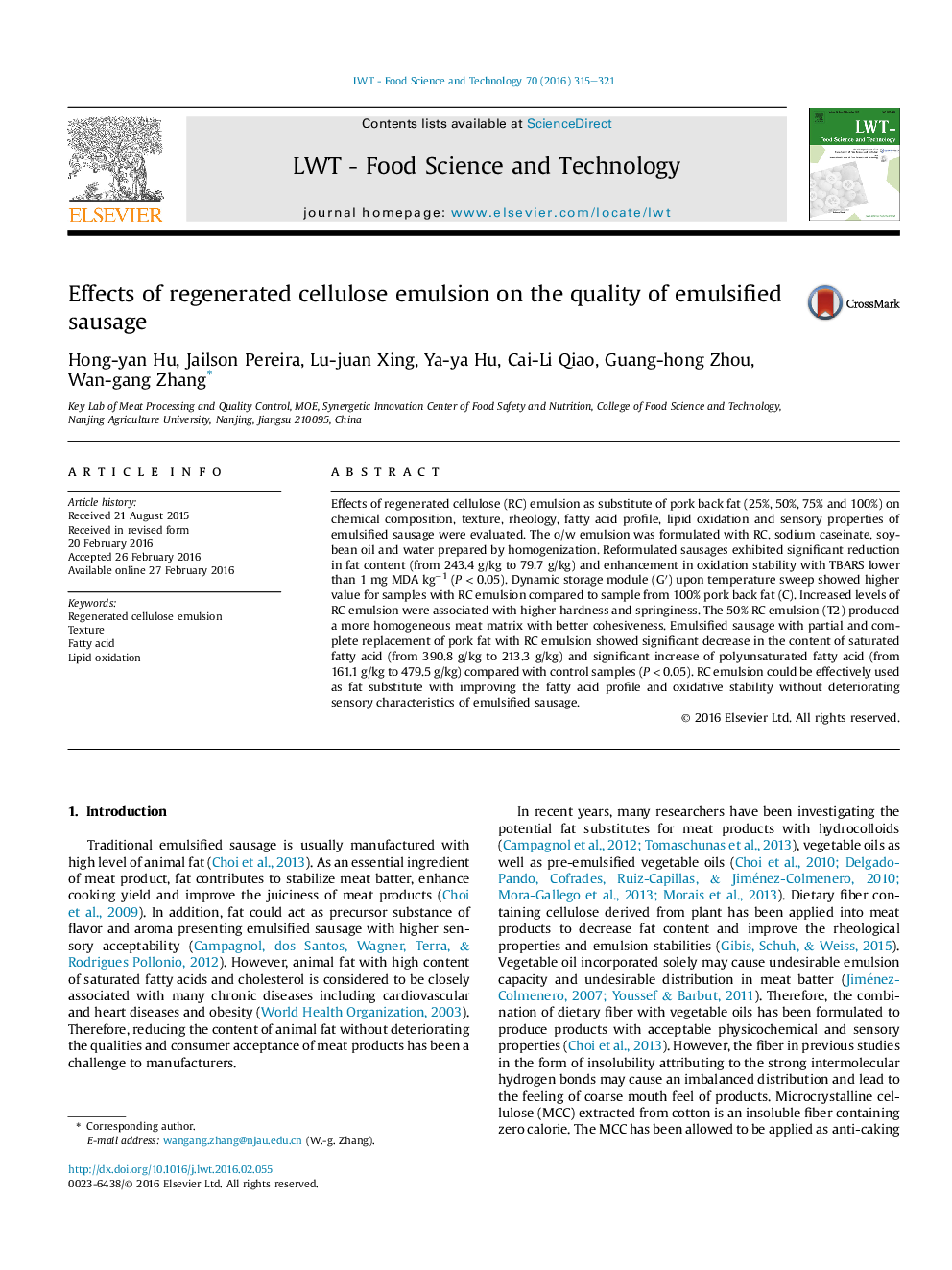| Article ID | Journal | Published Year | Pages | File Type |
|---|---|---|---|---|
| 4563601 | LWT - Food Science and Technology | 2016 | 7 Pages |
•Incorporation of emulsion increased PUFA and decreased SFA and MUFA.•Partial and total replacement contributed to enhanced oxidative stability.•No more than 50% emulsion improved springiness, cohesiveness and appearance.
Effects of regenerated cellulose (RC) emulsion as substitute of pork back fat (25%, 50%, 75% and 100%) on chemical composition, texture, rheology, fatty acid profile, lipid oxidation and sensory properties of emulsified sausage were evaluated. The o/w emulsion was formulated with RC, sodium caseinate, soybean oil and water prepared by homogenization. Reformulated sausages exhibited significant reduction in fat content (from 243.4 g/kg to 79.7 g/kg) and enhancement in oxidation stability with TBARS lower than 1 mg MDA kg−1 (P < 0.05). Dynamic storage module (G′) upon temperature sweep showed higher value for samples with RC emulsion compared to sample from 100% pork back fat (C). Increased levels of RC emulsion were associated with higher hardness and springiness. The 50% RC emulsion (T2) produced a more homogeneous meat matrix with better cohesiveness. Emulsified sausage with partial and complete replacement of pork fat with RC emulsion showed significant decrease in the content of saturated fatty acid (from 390.8 g/kg to 213.3 g/kg) and significant increase of polyunsaturated fatty acid (from 161.1 g/kg to 479.5 g/kg) compared with control samples (P < 0.05). RC emulsion could be effectively used as fat substitute with improving the fatty acid profile and oxidative stability without deteriorating sensory characteristics of emulsified sausage.
